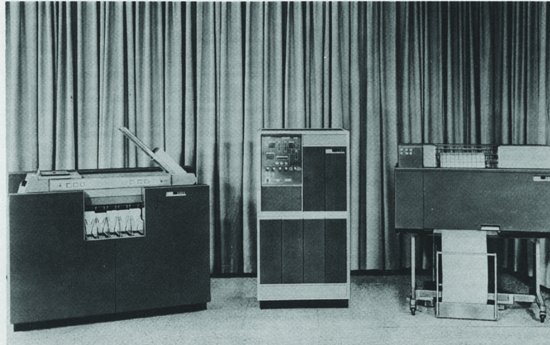INTERLUDE
Yesterday, Today, Tomorrow: Data Storage
Like the foundations of a building, data storage technologies have little glamour. Yet, they are the base upon which the edifice of modern computing is built. One of the major theses of this book is that many otherwise obvious innovations have been rendered impossible due to inadequate data storage architectures. It is worth a closer look at the evolution of these architectures.
YESTERDAY
We have long since come to think of computers as containers for information, so it is a bit surprising to note that an entire generation of commercially viable computers operated with essentially no persistent storage at all. Typical of this era was the IBM 1401 (see Figure I2.1). Introduced in 1959, and sold through the early 1970s, this extremely successful low-end machine brought electronic data processing within reach of thousands of small businesses. And yet, it had no disk drive or other digital storage of any kind. Each power cycle was essentially a “factory reset.”
Figure I2.1 IBM 1401 computer circa 1961
Source: Ballistic Research Laboratories, Aberdeen Proving Ground, Maryland

How was such a device useful? The key was a complete reliance on external storage, typically punched cards. Bootstrapping the 1401 involved placing a deck of cards into a bin and pressing a button labeled LOAD. Each of the 80 columns of punches on each card was ...
Get Trillions: Thriving in the Emerging Information Ecology now with the O’Reilly learning platform.
O’Reilly members experience books, live events, courses curated by job role, and more from O’Reilly and nearly 200 top publishers.

